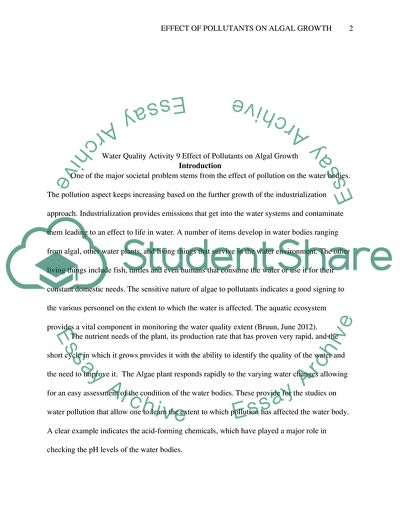Cite this document
(Water Quality Activity: The Effect of Pollutants on Algal Growth Lab Report, n.d.)
Water Quality Activity: The Effect of Pollutants on Algal Growth Lab Report. https://studentshare.org/environmental-studies/1865537-water-quality-activity-9-effect-of-pollutants-on-algal-growth
Water Quality Activity: The Effect of Pollutants on Algal Growth Lab Report. https://studentshare.org/environmental-studies/1865537-water-quality-activity-9-effect-of-pollutants-on-algal-growth
(Water Quality Activity: The Effect of Pollutants on Algal Growth Lab Report)
Water Quality Activity: The Effect of Pollutants on Algal Growth Lab Report. https://studentshare.org/environmental-studies/1865537-water-quality-activity-9-effect-of-pollutants-on-algal-growth.
Water Quality Activity: The Effect of Pollutants on Algal Growth Lab Report. https://studentshare.org/environmental-studies/1865537-water-quality-activity-9-effect-of-pollutants-on-algal-growth.
“Water Quality Activity: The Effect of Pollutants on Algal Growth Lab Report”. https://studentshare.org/environmental-studies/1865537-water-quality-activity-9-effect-of-pollutants-on-algal-growth.


